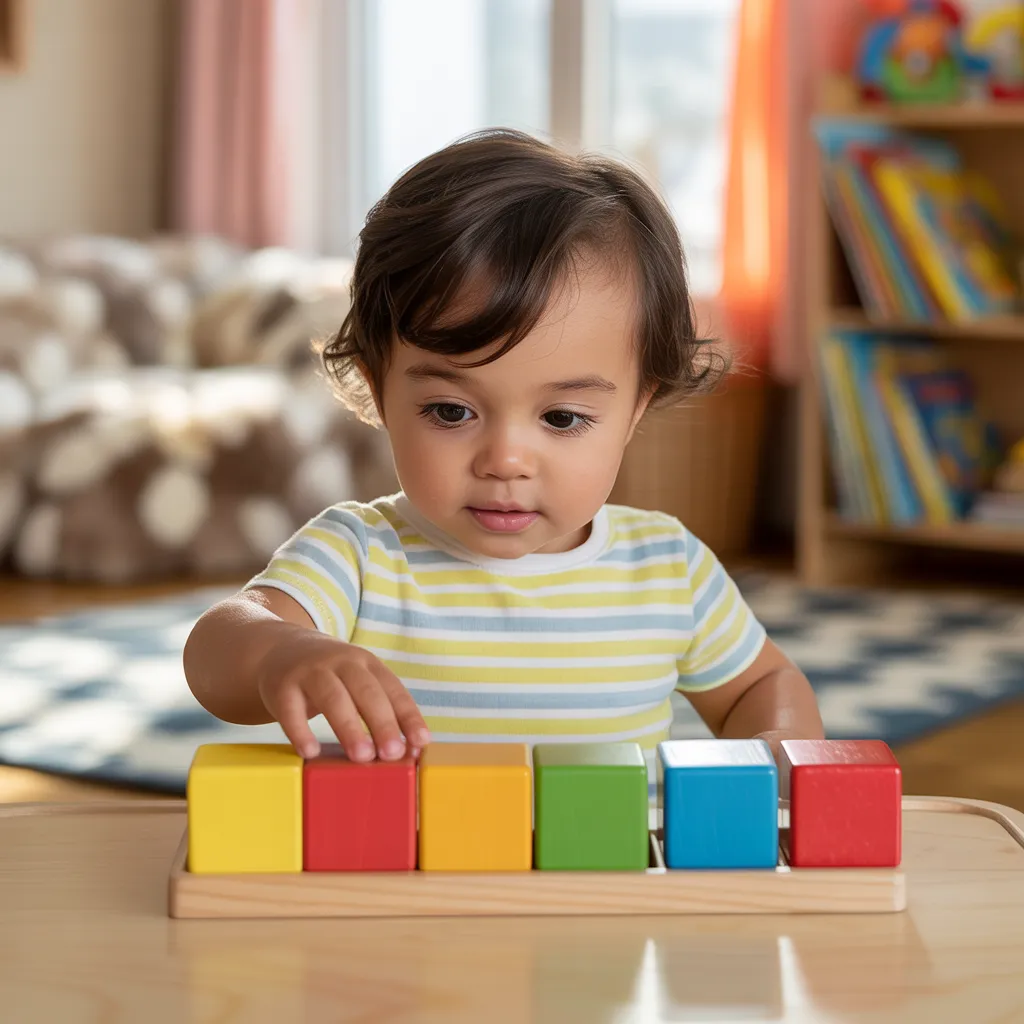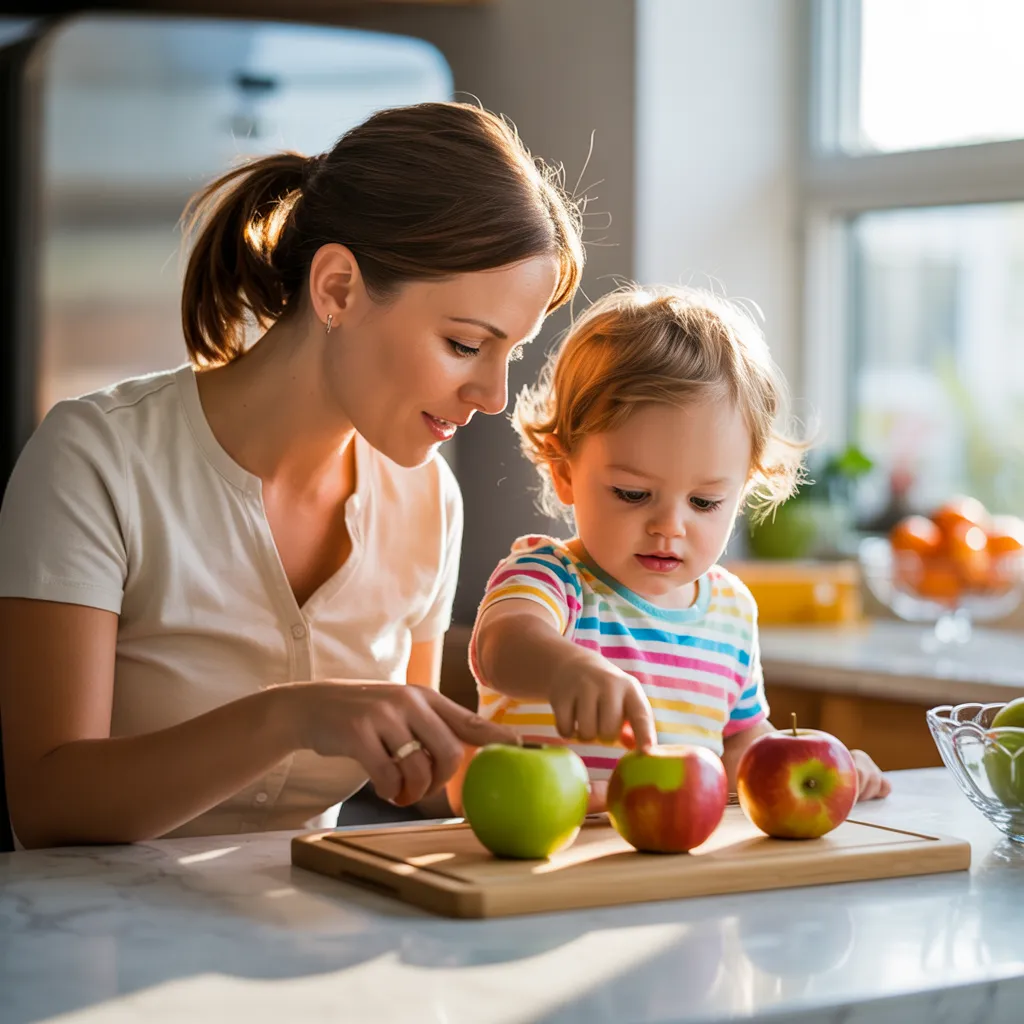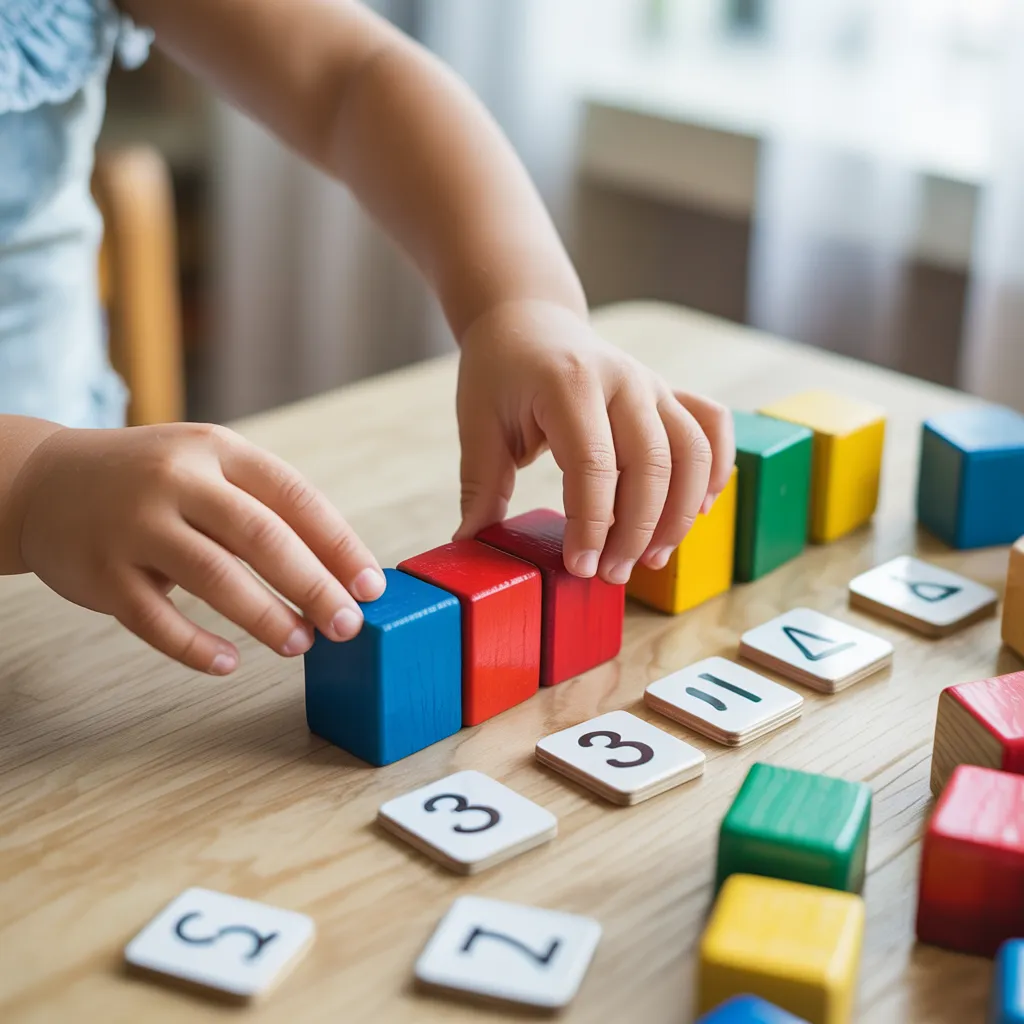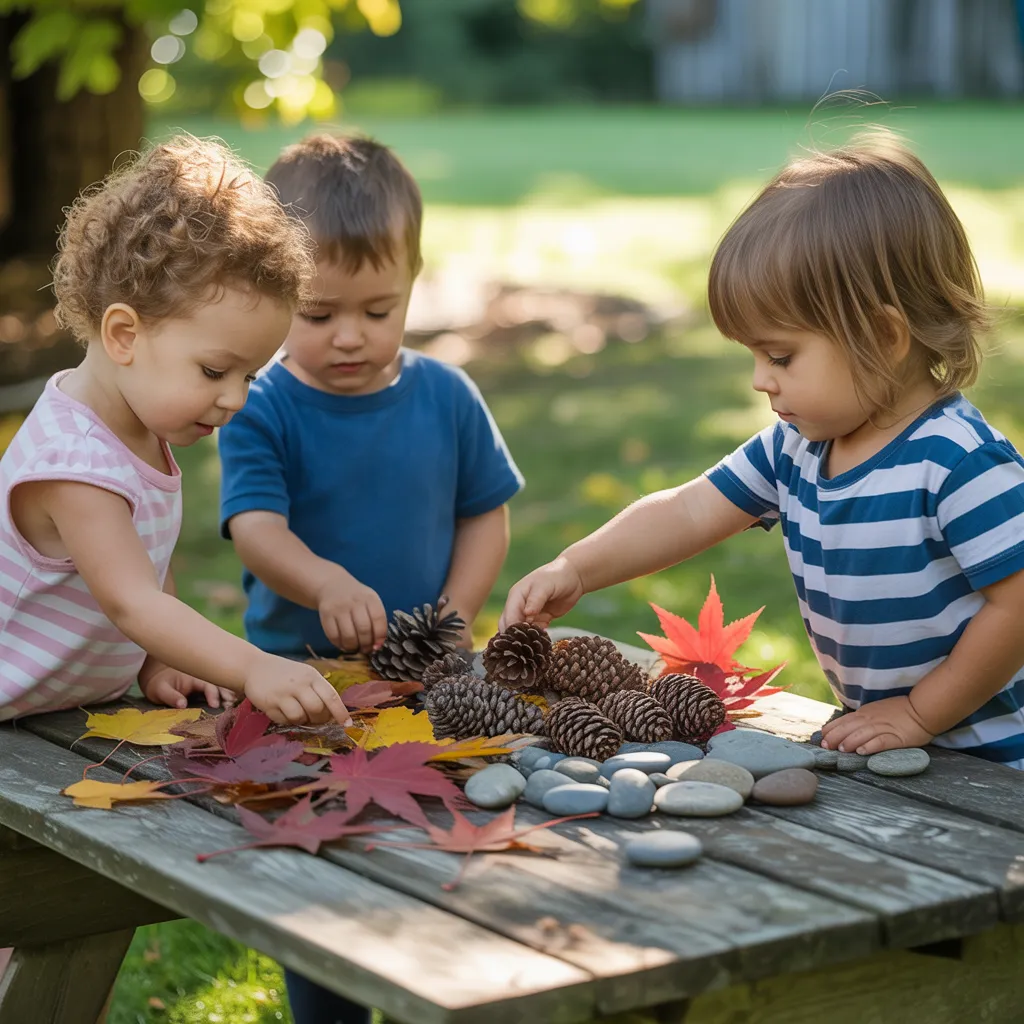Counting with objects activities provide a critical bridge between abstract numerical concepts and concrete understanding for young learners. When children physically manipulate items while counting, they develop a deeper comprehension of what numbers actually represent, establishing the vital concept of one-to-one correspondence—the understanding that each number word connects to exactly one object. These hands-on experiences create neural pathways that support mathematical thinking far more effectively than rote counting alone. For parents and educators seeking to build strong mathematical foundations, counting with objects activities offer versatile, engaging options that can be customized to match children’s interests and developmental stages. The beauty of these activities lies in their accessibility—everyday items transform into powerful learning tools, turning ordinary moments into opportunities for mathematical discovery. By incorporating counting with objects activities into daily routines, adults help children develop not just counting skills, but a positive relationship with mathematics that supports lifelong learning.
The Developmental Benefits of Counting with Objects Activities

Counting with objects activities do far more than teach children to recite numbers in sequence. These concrete experiences develop several interconnected mathematical skills that form the foundation for more advanced concepts:
- One-to-one correspondence: Children learn that each object corresponds to exactly one number in the counting sequence
- Cardinality: Understanding that the last number counted represents the total quantity
- Conservation of number: Recognizing that the quantity remains the same regardless of how objects are arranged
- Subitizing: The ability to quickly recognize small quantities without counting each item
- Number operations: Building foundations for addition and subtraction through manipulating object groups
The Brain Science Behind Counting with Objects Activities
Research in neuroscience reveals why counting with objects activities are so effective. When children engage multiple senses during learning, they create stronger, more resilient neural connections. As they see, touch, move, and verbalize during counting activities, different brain regions activate simultaneously:
- Visual processing areas interpret what they see
- Motor cortex controls physical manipulation of objects
- Language centers process number words and mathematical vocabulary
- Memory systems store and retrieve number sequences and quantity relationships
This multi-sensory activation creates a robust network of connections that makes mathematical concepts more accessible and retrievable for future learning.
Essential Counting with Objects Activities by Age Group
Toddlers and Young Preschoolers (Ages 2-3)
At this foundational stage, counting with objects activities should focus on small quantities and involve large, easy-to-handle items:
- Counting Steps: Count each step as you climb stairs together, touching each step for emphasis.
- Snack Time Counting: Count out small snacks like crackers or berries as you place them on the plate.
- Toys in the Basket: Count toys aloud as the child places them in a container during cleanup time.
- Body Part Counting: Touch and count fingers, toes, eyes, and ears during daily routines.
- Nature Walk Collections: Gather and count natural items like rocks, sticks, or leaves during outdoor exploration.

Older Preschoolers (Ages 4-5)
As children develop greater dexterity and longer attention spans, counting with objects activities can become more structured:
- Sorting and Counting: Sort objects by color, size, or type before counting each group.
- Counting Jars: Fill clear containers with objects to create visual representations of different quantities.
- Counting Patterns: Arrange objects in different patterns (lines, circles, arrays) while counting to reinforce conservation of number.
- Number-Object Matching: Place numeral cards beside the corresponding quantity of objects.
- Cookie Counting: Count chocolate chips or sprinkles as you bake together.
- Puppet Counting Helper: Use a puppet who sometimes makes counting mistakes for children to correct.
Early Elementary (Ages 6-7)
Children beginning formal education benefit from counting with objects activities that bridge to more advanced concepts:
- Skip Counting Collections: Group objects in twos, fives, or tens to practice skip counting.
- Addition and Subtraction Stories: Create simple word problems using small objects to model operations.
- Measurement Counting: Count units when measuring length, volume, or weight.
- Money Counting: Sort and count coins, connecting their values.
- Pattern Building: Create and extend patterns while counting the elements in each repeating unit.
Creative Counting with Objects Activities Using Household Items
The most accessible counting with objects activities utilize materials already found in most homes:
Kitchen-Based Counting
The kitchen offers countless opportunities for meaningful counting practice:
- Pasta Sorting: Sort and count different pasta shapes.
- Cereal Box Math: Use cereal pieces for counting, grouping, and simple operations.
- Measuring Cup Quantities: Count scoops of ingredients during cooking projects.
- Silverware Sorting: Count forks, spoons, and knives when setting the table or unloading the dishwasher.
- Egg Carton Counting: Use empty egg cartons as organizational tools for counting smaller objects.

Recycled Materials Counting Activities
Transform everyday items into powerful counting tools:
- Bottle Cap Collections: Save plastic caps for sorting, counting, and pattern-making.
- Cardboard Roll Counting: Count objects dropped through paper towel tubes.
- Numbered Containers: Number recycled containers for sorting counted objects.
- Counting Sticks: Use popsicle sticks for building and counting activities.
- Homemade Counting Books: Create books using catalog cutouts or family photos for counting practice.

Sensory-Rich Counting Experiences
Engage multiple senses to strengthen counting concepts:
- Playdough Number Formation: Form numbers and corresponding quantities of playdough balls.
- Water Play Counting: Count cups of water poured during bath or water table play.
- Textured Counting Path: Create numbered stepping stones with different textures for tactile counting experiences.
- Musical Counting: Count drum beats, claps, or musical notes.
- Scented Counting Bags: Create numbered bags containing different scented items to count.

Integrating Counting with Objects Activities into Daily Routines
The most effective counting practice happens naturally throughout the day:
Morning Routine Counting Opportunities
Start the day with embedded counting practice:
- Count clothing items as children get dressed
- Count breakfast foods on the plate
- Count steps to the bathroom or kitchen
- Count toothbrush strokes during dental hygiene
Outdoor Counting Adventures
The natural world offers rich counting contexts:
- Count birds, squirrels, or other animals spotted during walks
- Count flower petals, tree leaves, or stones collected
- Count playground equipment pieces before playing
- Count steps between landmarks
Bedtime Counting Rituals
End the day with calming counting activities:
- Count stuffed animals or dolls as they’re placed in bed
- Count stars on a bedroom ceiling
- Count pages or characters during story time
- Count goodnight kisses or hugs
Conclusion
Counting with objects activities provide essential, concrete experiences that build strong mathematical foundations. By incorporating these engaging, hands-on opportunities into everyday moments, parents and educators help children develop not just counting skills, but deeper numerical understanding that supports all future mathematical learning. The beauty of counting with objects activities lies in their simplicity and accessibility—no special materials or extensive preparation required, just an awareness of the mathematical potential in ordinary moments. Begin by selecting activities that match your child’s developmental level and interests, then gradually increase the challenge as their skills develop. Remember that the most valuable counting experiences are those that feel like play rather than practice. With consistent, joyful engagement in counting with objects activities, children develop both mathematical proficiency and a positive attitude toward numbers that will serve them throughout their educational journey.
25 Powerful Early Math Activities That Develop Lifelong Numerical Skills
FAQ About Counting with Objects Activities
Q: At what age should children start engaging in counting with objects activities? A: Children as young as 12-18 months can begin participating in very simple counting experiences, such as counting their fingers or toes during diaper changes. By age 2-3, most children benefit from more structured counting with objects activities using small quantities (1-3 objects). Remember that early exposure is about creating familiarity with counting language and process, not mastery of skills.
Q: My child can recite numbers in order but doesn’t seem to understand counting objects accurately. What’s happening? A: This is completely normal developmental progression! Reciting the number sequence (rote counting) typically develops before meaningful counting with objects. Many children go through a phase where they may count « 1, 2, 3 » while pointing to objects but move their finger too quickly or skip objects. Regular practice with counting with objects activities helps children synchronize their verbal counting with physical one-to-one correspondence.
Q: How high should I expect my preschooler to count with objects accurately? A: Most 3-year-olds can accurately count 3-5 objects, while 4-5-year-olds typically master counting up to 10 objects correctly. By kindergarten (age 5-6), many children can accurately count 15-20 objects. However, there’s significant variation in individual development. Focus on accuracy rather than quantity—it’s better for a child to count 5 objects perfectly than to attempt 20 with errors.
Q: What if my child seems frustrated during counting with objects activities? A: If frustration occurs, simplify the activity immediately. Reduce the number of objects, use larger, easier-to-handle items, or incorporate the child’s favorite themes or characters. Keep sessions brief (just a few minutes) and end on a positive note. Remember that playful, low-pressure experiences build the strongest foundations. Some children also benefit from watching an adult or older sibling model the counting process several times before attempting it themselves.
Q: How can I support children who are ready for more advanced counting challenges? A: For children who have mastered basic counting with objects, introduce activities that incorporate skip counting (counting by 2s, 5s, or 10s), counting backward, or simple addition and subtraction with objects. You can also explore estimation activities (« About how many beans do you think are in this jar? ») followed by counting to check. Using objects to create and solve simple word problems also extends mathematical thinking while maintaining the concrete support of physical manipulatives.
